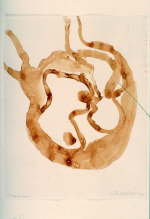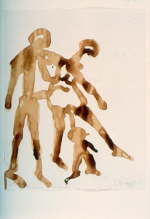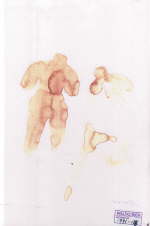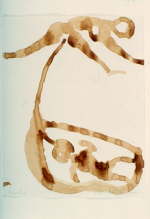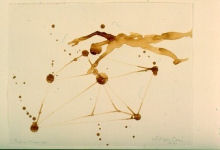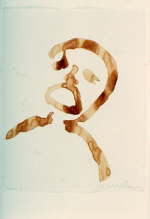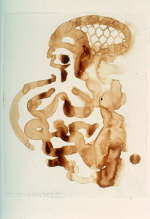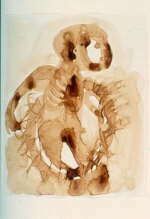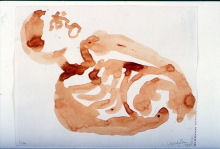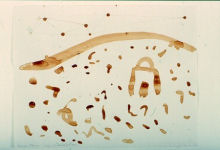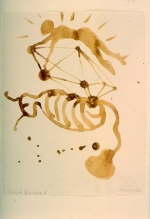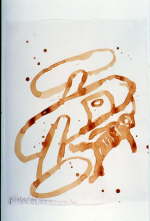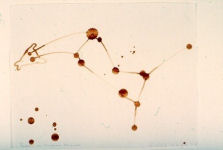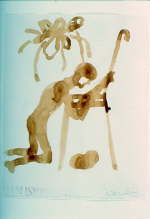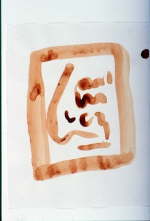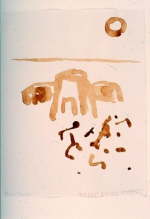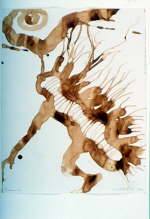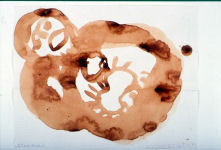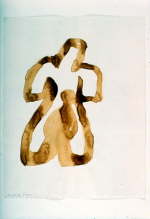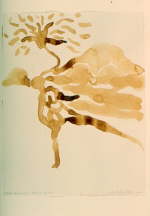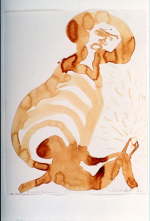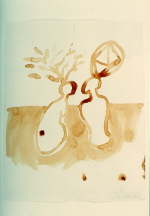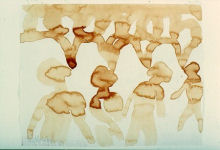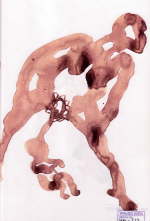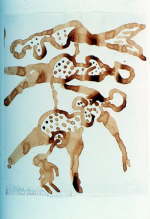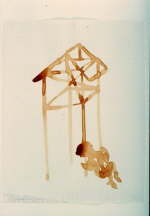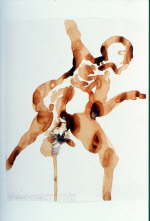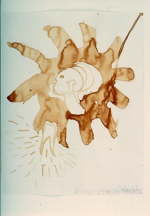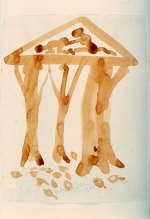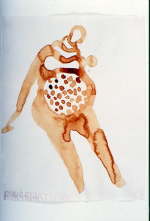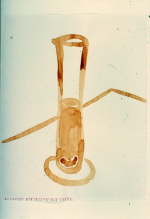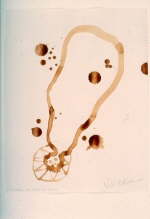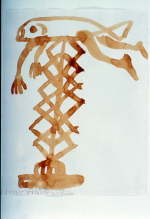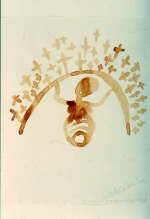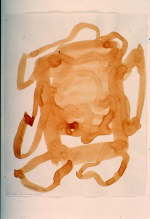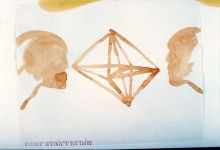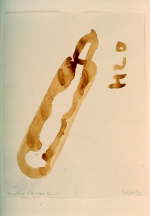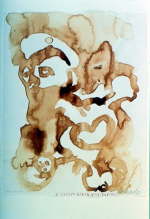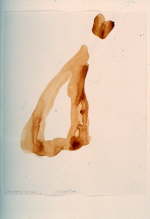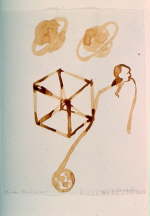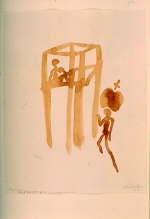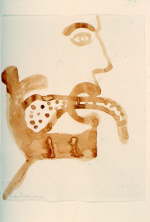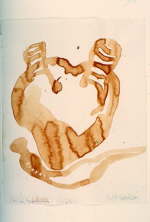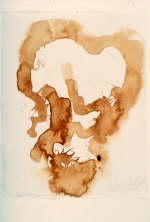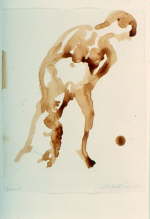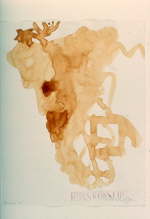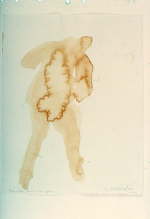|

|
|
Placenta block, 1991
Placenta on paper, size 20,5 by 27cm
Placenta:
An organ that forms in the uterus after the implantation of a zygote. The placenta moves nourishment from the mother's blood to the embryo or fetus; it also sends the embryo or fetus's waste products into the mother's blood to be disposed of by the mother's excretory system. The embryo or fetus is attached to the placenta by the umbilical cord. After birth, the placenta separates from the uterus and is pushed out of the mother's body.
Taken from Patrick Healy – Waldo Bien
‘When his son Mathijs Virgil Gomperts was born, he had soaked paper in the bucket containing the placenta, which had been preserved. The idea of waterrunes, Walter Scott’s word for waves breaking on the rocks, came to mind, as a reading of the paper stained and marked by the placenta. In 1992 ,with the birth of Niels Gomperts, prompted the study of the ‘process of crystallisation’. It resulted in 54 sheets of brushed images, some remote and suggestive, others with graphic accuracy relating to the birth act; the entire block itself a paper response to the coal block of the Death Room Interior, and birth and death (roles) in the continuum of life. The limits of material and the innerness of the somatic has appeared again in the work of Bien, who wants to create out of the extension of his own body a way to re-inscribe the method of work which overcomes alienation from the self and the world. The larger thematics that he has pursued throughout his artistic life are made dramatically clear when one sets the activity of the period from 1989 to 1994 over and against the preceding decade.
The interaction of the placenta with the paper has produced a warm purplish monochrome. Many of the figures sketched by Bien are in a standing pose, suggestive silhouettes, the accumulation of theme and variation within the block allow one to read it as a narrative so that the unconscious concern and fears, the ambiguity and inchoateness of feeling associated with birth are suggested.
It is a very intense psychological document, and its enormously personal nature, brings it further into the secrets which need affection, than any discourse on the problem of birth, or, paternity, or, maternity, a single bound volume. it is difficult to know how ideally the work can be seen, except consulted in a collection, or in a Cabinet des Dessins.
The disbinding of the block and the reduction of the sheets to a numbered series, does not go against the unity of the work which has a very specific temporal and physical integrity. In Delft, for example, they were shown along with sculpture on the ground which had been made in Tasmania (Pacific Ocean Floor, 1988-027] , in Bratislava and Amsterdam, 19…) the series was mixed with drawings by Joseph Semah (see collaborative works) A photo shows a single placenta drawing next to a Module on the studio wall, 2005.’
LUCA DIBLASI on Peter Sloterdijk (Placenta);
Following his characteristic tendency to do away with the great mythological and religious narratives of humanity by secularizing them, Peter Sloterdijk sets out to find a material correlative to the intuition, existing in many cultures, of an original human wholeness as it is expressed in numerous speculations about primitive man. In the process, Sloterdijk came upon the placenta, which nourishes the embryo and is connected to the mother through the umbilical cord. The placenta can, in fact, neither be unambiguously interpreted as the respective organ of the mother, nor of the child. For Sloterdijk, the placenta presented evidence of a lost human wholeness that, in its beginning, was constituted dyadically.
Just as according to Aristophanes, contemporary man, in Plato's Symposium, is the mutilated half of an originally rounded being which is whole; also according to Sloterdijk, humans originally comprised a two-part wholeness this side of the confrontative separation of subject and object. Sloterdijk employs the term Mit (With) to designate this state, which is hard to describe because of its pre-linguistic origin. The fetus and its placenta are connected to each other like Orpheus and Eurydice. Every Orpheus is forced to leave his Eurydice. On parting, the latter bestows on him a space, "in which substitutions are possible." The vacant space that the lost "primal companion" leaves behind in man, becomes the starting point for a consistently renewed search for new companions and new substitute spheres. The Eurydice of the placenta also leaves behind the navel, the bodily trace that points to our original bipolarity, for the Orpheus-like half-human.
|
|
